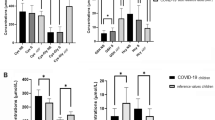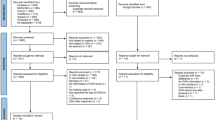Abstract
Objectives: Antioxidant defense status was investigated in HIV-infected patients by measuring serum selenium, erythrocyte glutathione peroxidase (GSH-Px) activity, plasma thiol (-SH) and glutathione (GSH) concentrations along with the assessment of the clinical stage and surrogate markers of HIV-disease.
Design, setting and subjects: Serum selenium levels were determined cross-sectionally in 104 sequentially selected HIV-infected patients (83 outpatients and 21 patients with ongoing AIDS defining events). The patients were classified into three stages of the disease, I, II and III according to the 1993 Centers For Disease Control (CDC) classification system for HIV-infection. GSH-Px activities, plasma SH and plasma GSH concentrations were determined in a subset of 24 patients at stage I and 12 patients at stage III with an active AIDS-defining disease.
Results: Mean serum selenium levels were lower in CDC stage II (68.7±20.9 µg/l; P<0.01; n=34) and stage III (51.4±14.7 µg/l; P<0.01; n=37) HIV-infected patients than in healthy subjects (89.2±20.9 µg/l; n=72) and stage I patients (82.3±20.5; µg/l; n=33). Serum selenium levels were positively correlated with CD4-count (r=0.42; P<0.001; n=104) and inversely with levels of soluble tumor necrosis factor receptors type II (r=−0.58; P<0.01; n=35), neopterin (r=−0.5; P<0.001; n=80) and β2-microglobulin (r=−0.4; P<0.001; n=94). Hepatitis C virus (HCV) and HIV-coinfected patients at CDC stages I and II showed markedly lower selenium concentrations compared to HIV-infected patients without concomitant HCV-infection. Serum selenium and GSH-Px activity in hospitalized AIDS patients was significantly lower as compared to asymptomatic patients and healthy subjects, whereas plasma SH and GSH concentrations were lower in both, asymptomatic -and AIDS-patients, than in the controls.
Conclusion: The results show that stages I–III of HIV-disease are characterized by significant impairments of antioxidative defenses provided by selenium, GSH-Px, SH-groups and GSH.
Sponsorship: Department of General Internal Medicine, University of Bonn, Germany.
This is a preview of subscription content, access via your institution
Access options
Subscribe to this journal
Receive 12 print issues and online access
$259.00 per year
only $21.58 per issue
Buy this article
- Purchase on Springer Link
- Instant access to full article PDF
Prices may be subject to local taxes which are calculated during checkout
Similar content being viewed by others
Author information
Authors and Affiliations
Rights and permissions
About this article
Cite this article
Look, M., Rockstroh, J., Rao, G. et al. Serum selenium, plasma glutathione (GSH) and erythrocyte glutathione peroxidase (GSH-Px)-levels in asymptomatic versus symptomatic human immunodeficiency virus-1 (HIV-1)-infection. Eur J Clin Nutr 51, 266–272 (1997). https://doi.org/10.1038/sj.ejcn.1600401
Received:
Revised:
Accepted:
Issue Date:
DOI: https://doi.org/10.1038/sj.ejcn.1600401



